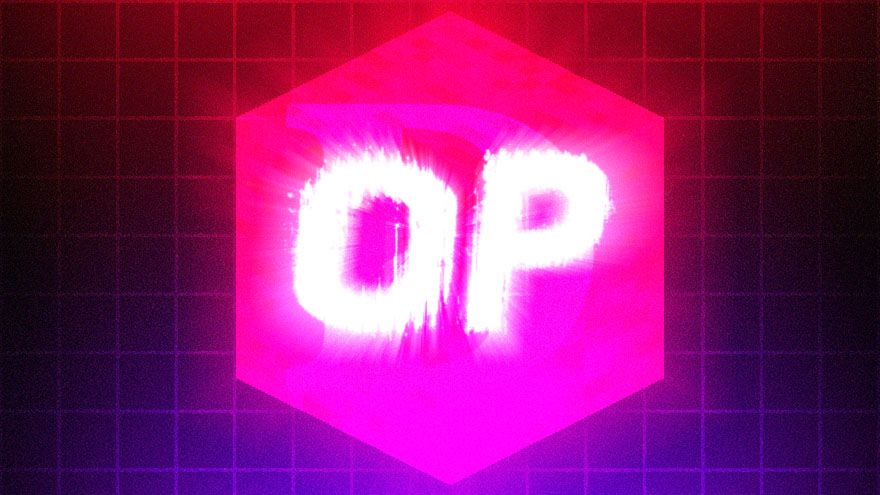Modular Architecture Lays Groundwork For ‘Superchain’ Of Interconnected Layer 2s.
Optimism has deployed its long-awaited Bedrock upgrade, which optimizes its technology stack for modularity, allowing third-party developers to launch customizable layer 2 networks on top of the OP Stack.
Bedrock is also designed to minimize the differences between the Ethereum mainnet and Optimism’s Layer 2. Less than 2,000 lines of code differentiate the Go Ethereum (Geth) client from Optimism’s modified version.

Optimism describes Bedrock as ushering in an era of “Ethereum Equivalence,” phasing out the “EVM Equivalence” offered by Optimism’s previous version. The layer 2 network deployed Bedrock on the Goerli testnet in January and froze its code in April.
The project’s OP governance token is up 10% in the past 24 hours, but remains down 22% in the last month.
Ethereum Scaling Race
The upgrade comes as competition within Ethereum’s Layer 2 ecosystem is heating up.
While Arbitrum and Optimism shared dominance over the L2 sector throughout 2022, a new generation of zero-knowledge rollups from Matter Labs and Polygon (plus forthcoming solutions from ConsenSys and Scroll) is taking significant market share from the incumbents.
Airdrop speculation has helped zkSync Era attract $421M in total value locked (TVL) since launching in late March, positioning it as the third-largest L2, according to Dune Analytics. Polygon’s zkEVM is also steadily climbing up the ranks with $27M in TVL after less than three months.
However, Optimism hopes to outshine the competition through collaboration – by assembling a network of interconnected Layer 2s built on top of its OP Stack, called the “Superchain.”
“Building out these networks of chains is [an] exciting concept that we’re introducing here,” Optimism co-founder Ben Jones told The Defiant. “It’s not at all, from our perspective, a matter of competition.”
OP Stack
Optimism emphasizes the modularity of the OP Stack, encouraging developers to build new Layer 2s leveraging its technology.
Developers can modify many of the core features underpinning an L2, including proof systems, execution engines, and data availability layers. This means the OP Stack could power Layer 2s that do not use optimistic fraud proofs, such as zero-knowledge rollups.
“Bedrock makes it easy to swap out different components in the OP Stack and add new capabilities,” Optimism said.
Superchain
Optimism hopes to create an interconnected network of OP Stack-based L2s that share bridging, decentralized governance, upgrades, and a communication layer.
“The launch of the Superchain would merge Optimism Mainnet and other chains into a single unified network of OP Chains,” Optimism said.
Optimism also predicts many OP Chains will choose to use Optimism’s project’s battle-tested sequencer rather than build their own, potentially driving a new source of revenue for the project.
Optimism already has a powerful ally in Coinbase, the leading U.S. centralized exchange. The company is entering the Ethereum scaling arena with Base, a Layer 2 network built using the OP Stack.
Fee Reduction
The time taken to confirm deposits to Optimism will drop from 10 minutes to three minutes, while post-Bedrock blocks will process in just two seconds (compared to 12 seconds on Ethereum’s mainnet).
The upgrade aims to reduce transaction fees by optimizing the batched processing of transactions and leverages Ethereum as a data availability layer. Bedrock is expected to drive an additional 10% fee reduction by removing all mainnet execution gas and reducing Layer 1 data fees to their “theoretical minimum.”
Optimism said Bedrock also improves node performance by executing multiple transactions in a single rollup block, as opposed to the “one transaction per block model” used previously. “Combined with other upgrades, this feature is tipped to reduce state growth by around 15GB each year,” the team said.
Bedrock also enables support for EIP-1559, reducing the variance of Optimism’s network fees. EIP-1559 also introduces a burn-like mechanism where ETH base fees are permanently locked in a bridge and removed from Ethereum’s circulating supply.
Despite the numerous fee-saving upgrades contained in Bedrock, Optimism warned users there could be a surge in on-chain activity immediately following Bedrock, potentially causing temporarily high network fees.
Read More: thedefiant.io









 Bitcoin
Bitcoin  Ethereum
Ethereum  Tether
Tether  XRP
XRP  Solana
Solana  USDC
USDC  Dogecoin
Dogecoin  Cardano
Cardano  TRON
TRON  Lido Staked Ether
Lido Staked Ether  Wrapped Bitcoin
Wrapped Bitcoin  Sui
Sui  Chainlink
Chainlink  Wrapped stETH
Wrapped stETH  Avalanche
Avalanche  Stellar
Stellar  Shiba Inu
Shiba Inu  Hyperliquid
Hyperliquid  Hedera
Hedera  LEO Token
LEO Token  Bitcoin Cash
Bitcoin Cash  Toncoin
Toncoin  Litecoin
Litecoin  Polkadot
Polkadot  USDS
USDS  WETH
WETH  Pi Network
Pi Network  Monero
Monero  Wrapped eETH
Wrapped eETH  Pepe
Pepe  Bitget Token
Bitget Token  Binance Bridged USDT (BNB Smart Chain)
Binance Bridged USDT (BNB Smart Chain)  Ethena USDe
Ethena USDe  Coinbase Wrapped BTC
Coinbase Wrapped BTC  WhiteBIT Coin
WhiteBIT Coin  Bittensor
Bittensor  Uniswap
Uniswap  Dai
Dai  NEAR Protocol
NEAR Protocol  Aptos
Aptos  Aave
Aave  OKB
OKB  Ondo
Ondo  Jito Staked SOL
Jito Staked SOL  Internet Computer
Internet Computer  Ethereum Classic
Ethereum Classic  Cronos
Cronos  BlackRock USD Institutional Digital Liquidity Fund
BlackRock USD Institutional Digital Liquidity Fund